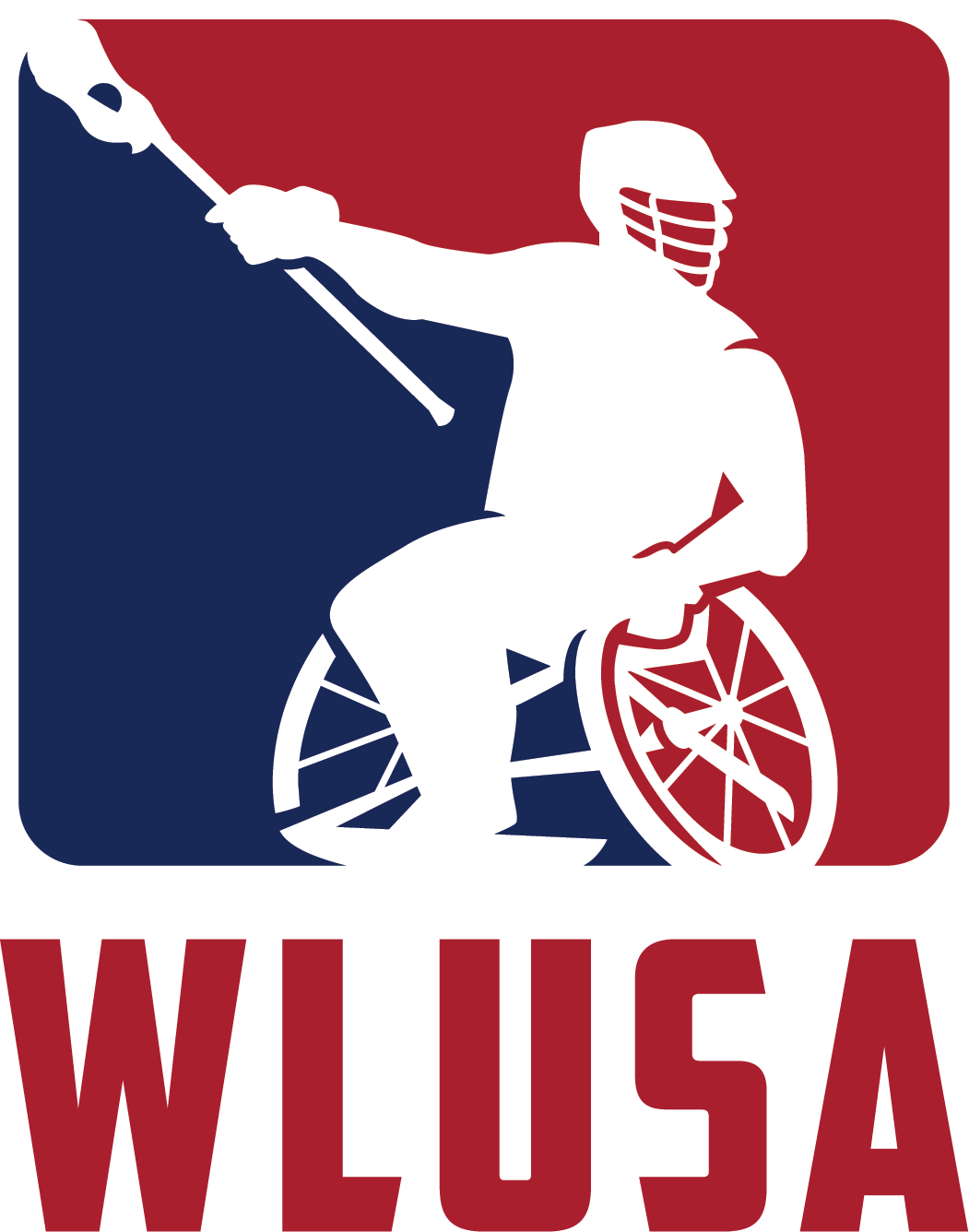2023 Wheelchair Lacrosse Rule Changes
Shoulder Pads
Decision:
All court players shall wear shoulder pads designed for lacrosse that meet the NOCSAE ND200 standard at manufacture – OR – both a protective device certified to the NOCSAE ND200 standard at manufacture AND shoulder pads designed for lacrosse.
Rationale:
This rule gives players some flexibility to wear new equipment options which may better fit their needs while still ensuring athlete safety.
Goalkeeper Equipment
Decision:
All goalkeeper equipment (except the stick) must be constructed solely for protective purposes; must conform to the natural shape of the body; and must not be excessively large.
Box lacrosse goalie chest protectors are excessively large and are no longer allowed in wheelchair lacrosse.
Rationale:
When combined with a sport wheelchair, box lacrosse goalie chest protectors create an unfair advantage and restrict scoring significantly.
Ice hockey goalie chest protectors which are not excessively large are still allowed under this rule for goalkeepers who want additional protection.
All goalkeepers still must wear a protective device certified to the NOCSAE ND200 standard at manufacture.
Length of game
Regulation Play:
4 quarters, 10-minutes each, running time
Each team receives 1 timeout per half
Overtime Play:
Sudden victory
4-minute periods, running time
Each team receives 1 timeout per period
Overtime play is 4v4 (including goalkeepers)
No AB players are allowed in overtime
Exception: if the team’s goalkeeper is an AB player they may continue to play as a goalkeeper in overtime
Able-Bodied (AB) Players
Decision:
Rules regarding AB players will remain the same in 2023:
Each team is allowed to have up to 3 AB players on the court.
AB players’ chairs must be clearly distinguishable—often by applying brightly colored tape or ribbon to the back of the chair.
AB players must have their legs and feet fully strapped down at all times during play in order to prevent an unfair advantage.
Rationale:
Following COVID, many teams still rely on AB players in order to practice and field a complete roster.
Applying different rules for different players on the court would complicate gameplay for players, coaches, officials, and fans.
Restricting AB players from scoring may have unintended consequences, such as an incentive to double- or triple-cover disabled players.
WLUSA teams must recruit and roster more disabled athletes before adjusting rules for AB players.
STATEMENT Regarding AB Players
As an inclusive league, Wheelchair Lacrosse USA (WLUSA) encourages the participation of able-bodied (AB) players while emphasizing that disabled athletes are the primary focus of the league.
In 2022, the WLUSA Board of Directors was asked to consider rules updates which would limit the potential impact of AB players on competitive games. Following a survey of athletes, coaches, officials, and administrators, the board determined that revising the rules for AB players would not be beneficial at this time.
WLUSA recognizes and appreciates the contributions of our AB teammates. In fact, many WLUSA athletes report that the inclusive nature of the league—which allows both disabled and non-disabled athletes to compete alongside each other—is one of the most unique and enjoyable aspects of wheelchair lacrosse.
However, WLUSA must also emphasize and reinforce our mission to serve athletes with disabilities first and foremost. Unlike most AB players, disabled athletes do not have the opportunity to play “running” lacrosse. Therefore, all WLUSA teams should do everything possible to recruit, train, and develop disabled athletes as their top priority in order to provide equitable access to the sport. Wheelchair Lacrosse USA is committed to our mission of providing opportunities for people with disabilities to live active lifestyles while welcoming everyone into our league and our community.
